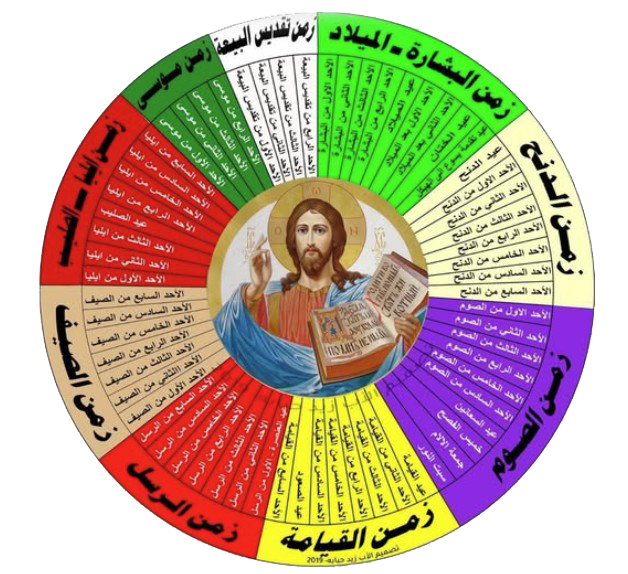Tell Me, O Church
The Season of the Sanctification of the Church
By Michael Antoon
The Chaldean liturgical year begins with Subara (Advent) and ends with Qudash ’Aita—the Sanctification of the Church. As the final four-week season of the year, it gathers everything we have celebrated into one proclamation: the Church belongs to Christ, is the Bride of Christ, and is sanctified by Him.
The liturgical year, in its classic shape, was primarily organized by Mar Ysho’Yahb III, Catholicos-Patriarch from 649–659 AD. The late Bishop Mar Sarhad Yawsip Jammo, in his book The Chaldean Liturgy: At the Gate of God, describes this closing season as the fulfillment of the Kingdom—the crowning of the entire liturgical year.
Throughout this season we are taught by Scripture as well as by hymns. On the first Sunday (Matthew 16:13–19), Peter (Kepa) confesses Christ and hears the promise: “Upon this Rock I will build my Church.” On the second (Matthew 12:1–21), the Lord of the Sabbath reveals Himself and says He “desires mercy, not sacrifice.” On the third (John 2:12–22), the cleansing of the Temple points to the true Temple—Christ’s Body. And on the fourth (Matthew 22:41–23:22), the Lord claims His people for Himself and warns against hypocrisy. Together, these readings reveal Jesus Christ establishing, cleansing, teaching, and espousing His Church.
Throughout the weeks of Qudash ’Aita, the Church of the East sings one of its most beloved hymns: “Amar Li Ayta”—Tell Me, O Church. It is both hymn and catechism, a complete teaching that helps transform the deep meaning of the season into prayer. Through a series of questions, it reminds us that everything created will fade, yet the Church stands firm upon the Rock that will never move.
Tell Me, O Church
Tell me, O Church, where shall I build you? Shall I build you upon the sun?
No, no, for it is said in the Scriptures,
“The rays of the sun are darkened.” (Joel 2:10) Tell me, O Church, where shall I build you? Shall I build you upon the moon?
No, no, for it is said in the Scriptures,
“The moon does not show forth its light.” (Isaiah 13:10) Tell me, O Church, where shall I build you?
Shall I build you upon the stars?
No, no, for it is said in the Scriptures, “The stars fall like leaves.” (Isaiah 34:4)
Tell me, O Church, where shall I build you? Shall I build you upon the mountains?
No, no, for it is said in the Scriptures,
“The mountains melt like wax.” (Psalm 97:5)
Tell me, O Church, where do you want me to build you? Shall I build you upon the rocks?
Yes, yes, for it is said in the Scriptures,
“Upon this Rock I will build my Church.” (Matthew 16:18)
Within Qudash ’Aita, the question posed by the hymn becomes the answer to the entire season. Not the sun, not the moon, not the stars, not the mountains—all will fade away. Only the Rock stands.
The Basilica hymns of this season, drawn from the Chaldean liturgical prayers, echo that same truth through the Church’s oldest imagery. They call the Church a bride, a princess, and a queen—beloved by her Bridegroom, Christ. He gives a dowry of His own Blood, clothes her in a robe of light, places a crown upon her head, and adorns her with the blossoms of spring. These hymns reveal the intimate relationship between the Church and her Bridegroom, who is Christ.
Ephesians 5, often read during the sacrament of marriage in the Chaldean Church, captures the same mystery. Saint Paul writes, “This is a great mystery, and I mean in reference to Christ and the Church.” The Groom gives His life; the Bride is sanctified and “stands in beauty.” Marriage becomes a living image of the season’s meaning, which is the love between Christ and His Church. The liturgical year ends with this: the Church crowned by the love of her Bridegroom.
Looking back historically, Mar Ysho’Yahb III arranged the liturgical year to begin with Advent (Subara) and end with the Sanctification of the Church (Qudash ‘Aita), uniting the dawn of salvation with its fulfillment. As Bishop Mar Sarhad Yawsip Jammo reflected, Ysho’Yahb “combines the dawning of the year with the end of time” and “celebrates Christ’s triumph joined by his crowned Bride, the Church—an impressive design and a dazzling beauty.”

